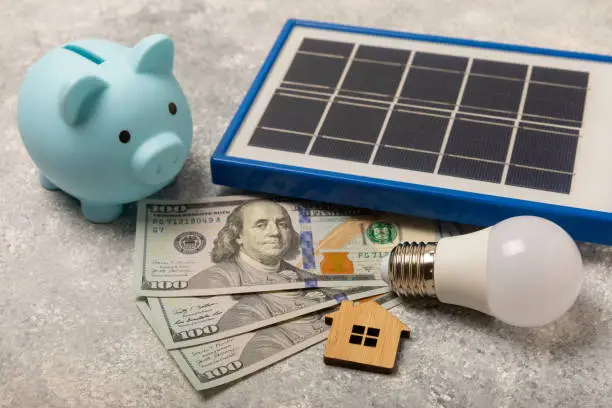With rising energy costs and growing concerns over environmental sustainability, many homeowners are searching for ways to lower their electricity bills. Fortunately, making your home more energy-efficient doesn’t have to be complicated or expensive. With a few strategic changes and habits, you can significantly reduce your monthly electricity expenses while also contributing to a greener planet. Here are some practical energy-efficient hacks to help you cut your electricity costs:
1. Switch to LED Bulbs
One of the easiest and most cost-effective ways to lower your electricity bill is by switching to LED light bulbs. Unlike traditional incandescent bulbs, LED bulbs use far less energy and have a longer lifespan. In fact, LED bulbs consume about 75% less energy and last 25 times longer than incandescent bulbs. Although LED bulbs might have a slightly higher upfront cost, they’ll save you money in the long run through reduced energy consumption and fewer replacements.
2. Unplug Appliances When Not in Use
Many household appliances continue to draw power even when turned off, a phenomenon known as “phantom load.” This includes devices such as televisions, microwaves, and chargers. While the amount of energy consumed by a single appliance may seem minimal, over time, it can add up. To combat this, make it a habit to unplug devices when they’re not in use or use a power strip with an on/off switch to easily disconnect multiple items at once.
3. Optimize Your Heating and Cooling Systems
Heating and cooling typically account for the majority of a household’s energy consumption, so optimizing these systems can lead to substantial savings. Start by ensuring that your thermostat is set efficiently—during winter, aim for 68°F during the day and 60°F at night, while in summer, set your thermostat to 78°F when you’re at home and 85°F when you’re away.
Additionally, upgrading your HVAC system to a more energy-efficient model or regularly servicing your current system can help reduce electricity usage. Installing a programmable thermostat allows you to set specific times for your heating and cooling systems to turn on and off, so you’re not wasting energy when you’re not home.
4. Seal Gaps and Insulate Your Home
Proper insulation is essential for maintaining a comfortable temperature inside your home without constantly relying on heating and cooling systems. Check for drafts around windows, doors, and ducts, and seal any gaps using weatherstripping or caulk. Adding insulation to your attic, walls, and floors can also help keep the temperature stable, reducing the workload on your HVAC system.
Upgrading your windows to energy-efficient models can also make a big difference in temperature control. Alternatively, consider installing window treatments such as heavy curtains or blinds that can prevent heat loss in the winter and reduce heat gain in the summer.
5. Use Energy-Efficient Appliances
When it’s time to replace an appliance, look for energy-efficient models. Appliances with the ENERGY STAR label meet strict efficiency guidelines set by the U.S. Environmental Protection Agency and the Department of Energy. ENERGY STAR appliances use less electricity to perform the same tasks, which can help lower your electricity costs over time. For example, ENERGY STAR refrigerators use 10-15% less energy than conventional models, while ENERGY STAR dishwashers use about 12% less energy and 30% less water.
If buying new appliances is not in your budget, there are still steps you can take to improve the efficiency of your current ones. For example, clean the coils on your refrigerator regularly, and make sure your washing machine and dishwasher are full before running them to maximize their efficiency.
6. Opt for Smart Power Strips
Power strips are a great way to control the flow of electricity to multiple devices, but not all power strips are created equal. Invest in smart power strips that can detect when a device is in standby mode and automatically cut off power. These strips can help reduce your energy consumption from electronics that consume power even when they’re not actively being used, like game consoles, TVs, and computers.
7. Switch to a Time-of-Use Plan
Many utility companies offer time-of-use (TOU) plans that charge different rates based on the time of day. On these plans, electricity tends to be cheaper during off-peak hours (usually late at night or early in the morning) and more expensive during peak hours. If your schedule allows, shift energy-intensive activities such as laundry, dishwashing, and cooking to off-peak times to take advantage of lower rates.
8. Install Energy-Efficient Light Fixtures and Ceiling Fans
In addition to switching to LED bulbs, installing energy-efficient light fixtures and ceiling fans can reduce your electricity consumption. Ceiling fans can help distribute air more efficiently, reducing the need for air conditioning during warmer months. Installing light fixtures that are specifically designed for energy efficiency can also ensure that your lighting system is optimized for minimal energy usage.
9. Use Natural Light
Take advantage of natural light during the day by opening blinds or curtains to let sunlight in. Not only will this reduce the need for artificial lighting, but it can also help warm your home during colder months. In the evening, consider using dimmers or low-wattage bulbs to reduce energy consumption from lighting.
10. Embrace Solar Power
If you’re considering a long-term investment to lower your energy bills, installing solar panels is a great option. While the upfront cost can be substantial, solar energy has the potential to significantly reduce or even eliminate your electricity expenses over time. Additionally, there are various incentives and tax rebates offered by governments to help offset the initial expense.
As solar technology continues to advance and costs continue to drop, solar power is becoming increasingly accessible to homeowners. For those in Salt Lake City, partnering with local solar companies can further help make the transition to renewable energy more affordable and efficient.
In Conclusion
Cutting your electricity costs doesn’t require a complete overhaul of your lifestyle. By implementing these energy-efficient hacks, you can lower your utility bills, reduce your environmental footprint, and enjoy a more comfortable home. Whether it’s upgrading your appliances, optimizing your heating and cooling systems, or simply being mindful of energy use, every small change adds up to big savings in the long run. Start making these adjustments today, and watch your electricity bill shrink while helping the planet at the same time!






